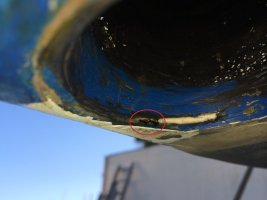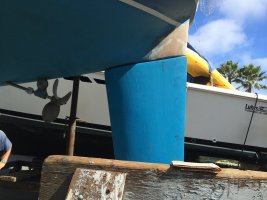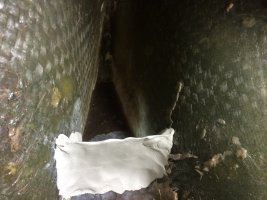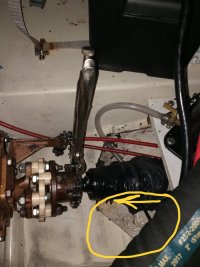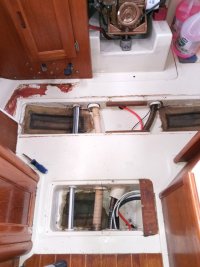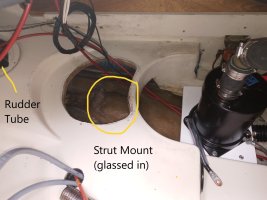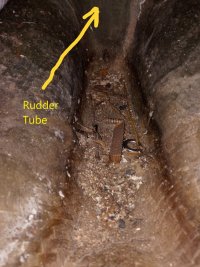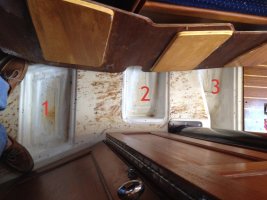I need advice for sourcing a steady water leak into my bilges. I have not had a persistent water leak into the bilges before (except when motoring fast and stern squats).
I've been on the hard at a marina in Mobile AL for a month - bottom paint, cutlass bearing replacement, new injectors, install new head gasket set.
I went back in the water late yesterday afternoon. The engine started fine after thorough fuel line bleeding, and I motored to a transient slip. There was water in the bilges which I pumped out (including using a manual pump)
BUT, the main bilge pump activated about 10pm with about 2" of water in main bilge. I helped it empty the bilge by pulling the float up until the pump finished.
Then, about every hour all night, the bilge pump activated again.
If I use a manual vacuum to get all water out of all bilge areas (incl in front of the mast), it takes 1hr, 15min to refill enough for the pump to cycle on automatically.
If I don't help it get all water out and just let the pump deactivate with ~1" still in the main bilge, it takes about 40 min to refill enough to activate the pump automatically.
So, it's not a trivial leak that I can ignore!
These possible culprits have been eliminated: stuffing box and rubber hose clamped to shaft tube are not leaking, anchor well is dry, water tanks were filled 2 days ago - all still completely full, seacocks in head and in engine bay are not leaking, when engine is running - no leaks seen on raw water side, heat exchanger side, or exhaust side.
Please give me any ideas I should chase - feeling a bit desperate :-\
Are there any potential back-syphons that could be happening, when bilge pump and engine are off?
Due to the inaccessibility of under-floor areas and plumbing, I'm worried that I'll end up having to tear up the floors if I suspect a split hose under there or other inaccessible failure point.
I've been on the hard at a marina in Mobile AL for a month - bottom paint, cutlass bearing replacement, new injectors, install new head gasket set.
I went back in the water late yesterday afternoon. The engine started fine after thorough fuel line bleeding, and I motored to a transient slip. There was water in the bilges which I pumped out (including using a manual pump)
BUT, the main bilge pump activated about 10pm with about 2" of water in main bilge. I helped it empty the bilge by pulling the float up until the pump finished.
Then, about every hour all night, the bilge pump activated again.
If I use a manual vacuum to get all water out of all bilge areas (incl in front of the mast), it takes 1hr, 15min to refill enough for the pump to cycle on automatically.
If I don't help it get all water out and just let the pump deactivate with ~1" still in the main bilge, it takes about 40 min to refill enough to activate the pump automatically.
So, it's not a trivial leak that I can ignore!
These possible culprits have been eliminated: stuffing box and rubber hose clamped to shaft tube are not leaking, anchor well is dry, water tanks were filled 2 days ago - all still completely full, seacocks in head and in engine bay are not leaking, when engine is running - no leaks seen on raw water side, heat exchanger side, or exhaust side.
Please give me any ideas I should chase - feeling a bit desperate :-\
Are there any potential back-syphons that could be happening, when bilge pump and engine are off?
Due to the inaccessibility of under-floor areas and plumbing, I'm worried that I'll end up having to tear up the floors if I suspect a split hose under there or other inaccessible failure point.

